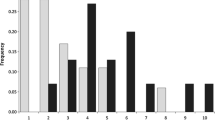Abstract
The growing molecular evidence that females of many species mate with several males calls for a critical reassessment of the selective forces which act to shape female mating tactics. In natural populations of the harlequin-beetle-riding pseudoscorpion, Cordylochernes scorpioides, females are polyandrous and typically produce mixed-paternity broods. Laboratory behavioral analyses and breeding experiments indicate that polyandry in this pseudoscorpion is an active strategy which increases female reproductive success. Females restricted to mating with a single male experienced a higher rate of embryo failure and produced significantly fewer offspring than either females mated to more than one male in the laboratory or females naturally inseminated in the field. Forced copulation, insufficient sperm from a single mating, male nutrient donations and variation in inherent male genetic quality cannot explain the greater number of nymphs hatched by polyandrous females in this study. Evidence suggests that, by mating with several males, C. scorpioides females may exploit postcopulatory mechanisms for reducing the risk and/or cost of embryo failure resulting from fertilization by genetically incompatible sperm.
Similar content being viewed by others
Author information
Authors and Affiliations
Additional information
Received: 5 May 1996 / Accepted after revision: 16 October 1996
Rights and permissions
About this article
Cite this article
Zeh, J. Polyandry and enhanced reproductive success in the harlequin-beetle-riding pseudoscorpion. Behav Ecol Sociobiol 40, 111–118 (1997). https://doi.org/10.1007/s002650050323
Issue Date:
DOI: https://doi.org/10.1007/s002650050323




